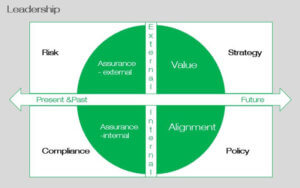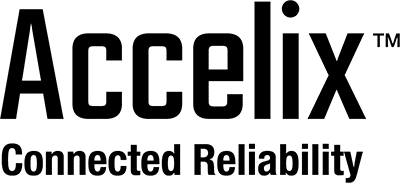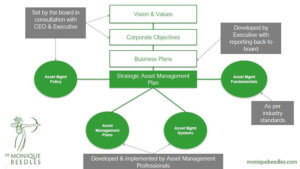How to define the board of directors’ role in asset management
If your goal is to improve the communications between your plant management ─ including your senior executives and board of directors ─ and your operations teams, a six-year-old industry blueprint known as the ISO 55000 Asset Management standard can serve as your guideline.
This certification was launched in 2014, with the purpose of setting expectations and defining structure and accountability for asset-management best practices. As of 2018, companies in 31 countries had become ISO 55000-certified, with Japan, the United Kingdom, The Netherlands and Australia leading the pack. Interest by industry professionals in the United States has been rising as companies internationally report operational improvements from adopting the standard.
Australian asset-management expert Monique Beedles has gained a global following for her expertise in a particular segment of the ISO 55000 standard: the board of directors’ role in asset management. In November 2019, Beedles recorded a webinar for Fluke on this subject, available here on-demand.
ISO 55000 defines “top management” as a person or group of people who direct and control an organization at the highest level ─ where top management have the power to delegate authority and provide resources within the organization.
In her presentation, Beedles provides the graphic in Figure 1 to illustrate the intersection between the board’s role and the key tenets of asset management.
Figure 1. Monique Beedles illustrates where asset management fits into the role and responsibilities of the board of directors.
The board of directors, she asserts, should set the vision and objectives for the company, create the business plan, and design a supporting strategy. Asset management is part of both the short- and long- term strategy for an organization.
However, company directors rarely dictate the asset-management fundamentals, create the asset-management plan, or design asset-management systems. Those are generally the responsibility of asset-management professionals. Where the directors, plant executives and operations come together is the asset-management policy and how it supports the strategic asset-management plan.
So, what are the core asset-management responsibilities of directors?
Let’s start with the asset-management fundamentals. Beedles describes them in this way:
- Value: Determine the value that the assets provide the organization – financial, non-financial, tangible, and intangible.
- Alignment: Translate organizational objectives into technical and financial processes, plans, activities, and tasks.
- Assurance: Get assurance that the assets and the asset-management system can and will deliver what is required of them. This considers the performance of the assets and asset-management system and to continual improvement of each.
- Leadership: Require a commitment from all levels of management to achieve their objectives. Also, employees should understand the asset-management objectives and their own roles in achieving them.
Next, Beedles advises that the board’s top four responsibilities are: risk, strategy, compliance, and policy. In figure 2, she has married external assurance with risk; value with strategy; internal assurance with compliance, and alignment with policy, with company leadership being the constant that supports everything.

Figure 2. Beedles illustrates the responsibilities of the board of directors regarding asset management.
The goal for all sides is to identify how asset management is part of the company’s strategic plan and then to establish a policy and a consistent framework of supporting communication.
A good asset-management policy, she says, should create value, align objectives, reduce risk, and maintain compliance obligations. Furthermore, establishing a collective understanding of not just “what is to be done” but “why it needs to be done” should substantially improve collaboration.
Beedles reports that companies with strong asset-management policies develop a common language that supports decision-making and implementation.
For more information on asset-management strategy and the role of directors, view the webinar, “The board of directors’ role in asset management,” and check out these additional resources:
- Webinar with Monique Beedles on the Board of Directors’ Role in Asset Management
- Website moniquebeedles.com
- Fluke white paper on ISO 55000
- Asset Management in High Performance Organizations: Report from the Asset Leadership Network







